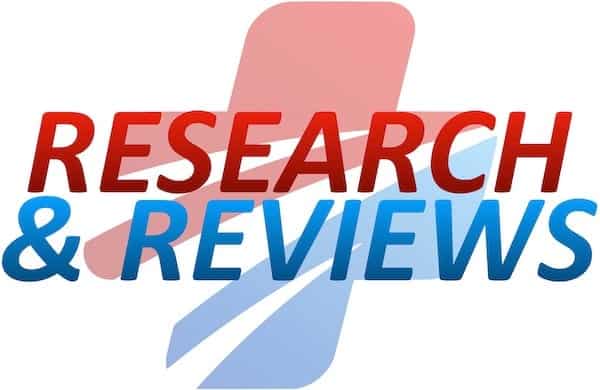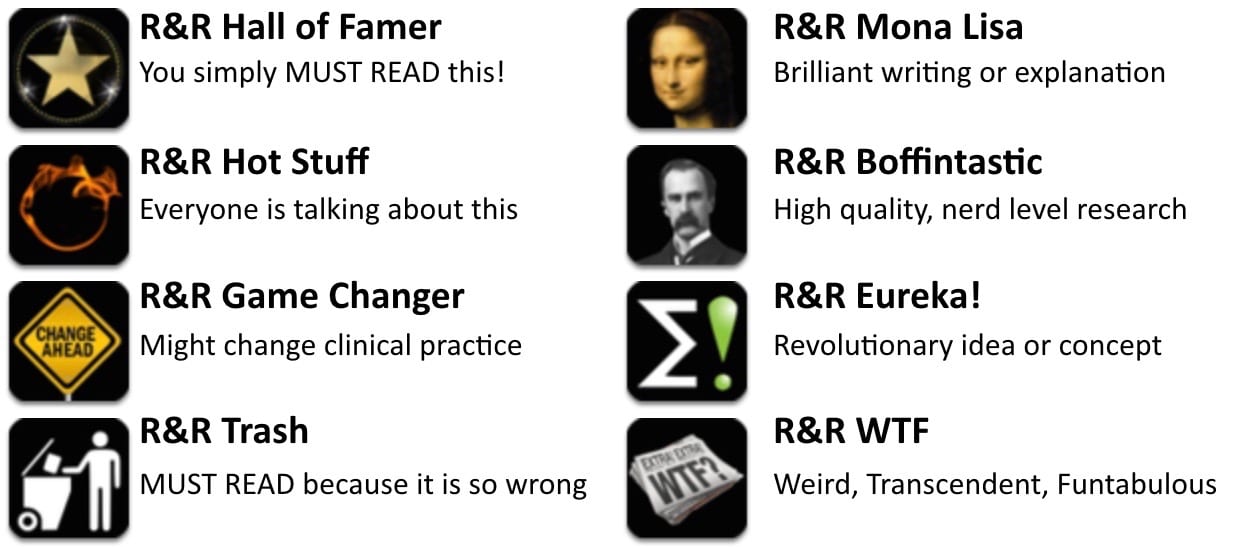R&R In The FASTLANE 027
Welcome to the 27th edition of Research and Reviews in the Fastlane. R&R in the Fastlane is a free resource that harnesses the power of social media to allow some of the best and brightest emergency medicine and critical care clinicians from all over the world tell us what they think is worth reading from the published literature.
This edition contains 8 recommended reads. The R&R Editorial Team includes Jeremy Fried, Nudrat Rashid, Soren Rudolph, Anand Swaminathan and, of course, Chris Nickson. Find more R&R in the Fastlane reviews in the : Overview; Archives and Contributors
This Edition’s R&R Hall of Famer
Cannon CM, Holthaus CV, Zubrow MT, Posa P, Gunaga S, Kella V, Elkin R, Davis S, Turman B, Weingarten J, Milling TJ Jr, Lidsky N, Coba V, Suarez A, Yang JJ, Rivers EP. The GENESIS Project (GENeralized Early Sepsis Intervention Strategies): A Multicenter Quality Improvement Collaborative. J Intensive Care Med. 2012 Aug 17. [Epub ahead of print] PubMed PMID: 22902347
- No doubt this will get a few mentions, but the GENESIS Project (of which Manny Rivers is the 16th author listed!!!) paper is just out in the Journal of Intensive Care Medicine. The methodology is a bit weird and is somewhere between a multicentre QI and a prospective observational study with a historical control group.
- Anyway, it’s a pretty big study across several centres (both academic and community) which demonstrates broadly that bundled early intervention strategies are associated with improved mortality with a claimed NNT of 7.
- Recommended by Domhnall Brannigan
Selker HP, Beshansky JR, Sheehan PR, et al. Out-of-hospital administration of intravenous glucose-insulin-potassium in patients with suspected acute coronary syndromes: the IMMEDIATE randomized controlled trial. JAMA. 2012 May 9;307(18):1925-33. Epub 2012 Mar 27. PubMed PMID: 22452807.
- The GIK therapy did not show a reduction in the primary end point of progression to MI (not statistically significant)… but was associated with lower rates of the composite outcome of cardiac arrest or in-hospital mortality…. Don’t be caught out! The study is powered to find a 12% difference in progression to Myocardial Infarction (primary endpoint). There is a 4.3% difference in the secondary outcome, but is this study powered enough to be confident that this difference is real (they would have needed much more than 900 patients for this).
- Recommended by: Sa’ad Lahri
Wallis, L. Emergency care is an acute need. Mail & Guardian, 4th Sepetember 2012. – [Fulltext]
- In Africa, like anywhere else, Emergency Care should not be an afterthought! Emergency and Acute care needs to be thought of as an investment…
- Recommended by: Sa’ad Lahri
Trebino, R. How to Publish a Scientific Comment in 1 2 3 Easy Steps – [Fulltext]
- Attributed to Rick Trebino, a physicist at Georgia Tech, this tale of the easy steps to making a comment in a scientific journal would be hilarious, if it wasn’t true.
- Recommended by: Joe Lex
National Research Council. Best Care at Lower Cost: The Path to Continuously Learning Health Care in America. Washington, DC: The National Academies Press, 2012. [Fulltext]
- New report by the US Institute of Medicine (IOM) on waste in US healthcare. They estimate that $750 billion (30%) is wasted on unhelpful, unnecessary care, preventable errors, missed prevention, etc. – which is more than the US spends on Medicare (~$600b). The official report is the usual ~400 pages but there’s a great summary infographic and some other executive summaries.
- Recommended by: Seth Trueger
Menditto VG, Lucci M, Polonara S, Pomponio G, Gabrielli A. Management of minor head injury in patients receiving oral anticoagulant therapy: a prospective study of a 24-hour observation protocol. Ann Emerg Med. 2012 Jun;59(6):451-5. Epub 2012 Jan 14. PubMed PMID: 22244878.
- The first of two studies – one small and prospective and scanned 100 pts on warfarin with head bumps, admitted them and scanned them again. 8% had a delayed bleed, one of whom had a SDH. the others got discharged even with new blood.
- Recommended by: Andy Neill
Nishijima DK, Offerman SR, Ballard DW, Vinson DR, Chettipally UK, Rauchwerger AS, et al. Immediate and delayed traumatic intracranial hemorrhage in patients with head trauma and preinjury warfarin or clopidogrel use. Ann Emerg Med. 2012Jun.;59(6):460–8.e1–7.<
- In the second study they prospectively recorded data on 1000 pts (70% on warfarin, 30% on clopidogrel) Bleeding was more common in plavix than warfarin (which might be work up bias) but it was about 7% overall. 4/1000 had a bleed later on (within 14 days) and they were all on warfarin.
- Bottom line – late bleeding on oral anticoagulants is either 0.6% or 8%. D’oh..
- Recommended by: Andy Neill
Elkhodair S, Mortazavi J, Chester A, Pereira M. Single fascia iliaca compartment block for pain relief in patients with fractured neck of femur in the emergency department: a pilot study. Eur J Emerg Med. 2011Dec.;18(6):340–3. Pubmed PMID: 21422933
- Hat tip to EMU on this one. I’ve been doing US guided femoral nerve blocks for a while now but have only recently started with the fascia iliaca blocks. This is another study saying that it’s a fairly straightforward procedure to teach, do and implement in the ED. The UK has had success with protocols for managing hip fractures to improve throughput and analgesia so why not add this to the protocol?
- Recommended by: Andy Neill
Chris is an Intensivist and ECMO specialist at The Alfred ICU, where he is Deputy Director (Education). He is a Clinical Adjunct Associate Professor at Monash University, the Lead for the Clinician Educator Incubator programme, and a CICM First Part Examiner.
He is an internationally recognised Clinician Educator with a passion for helping clinicians learn and for improving the clinical performance of individuals and collectives. He was one of the founders of the FOAM movement (Free Open-Access Medical education) has been recognised for his contributions to education with awards from ANZICS, ANZAHPE, and ACEM.
His one great achievement is being the father of three amazing children.
On Bluesky, he is @precordialthump.bsky.social and on the site that Elon has screwed up, he is @precordialthump.
| INTENSIVE | RAGE | Resuscitology | SMACC








